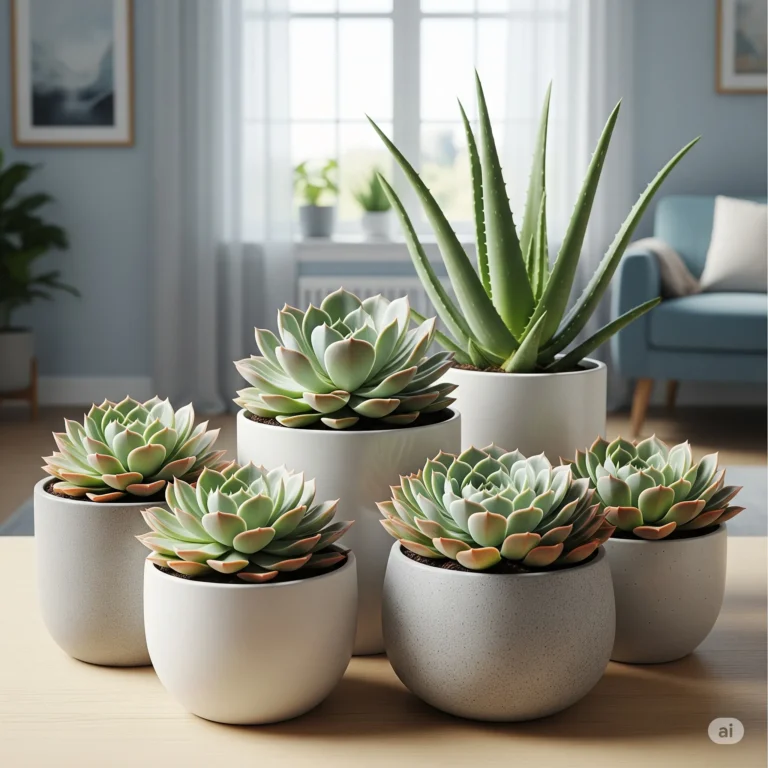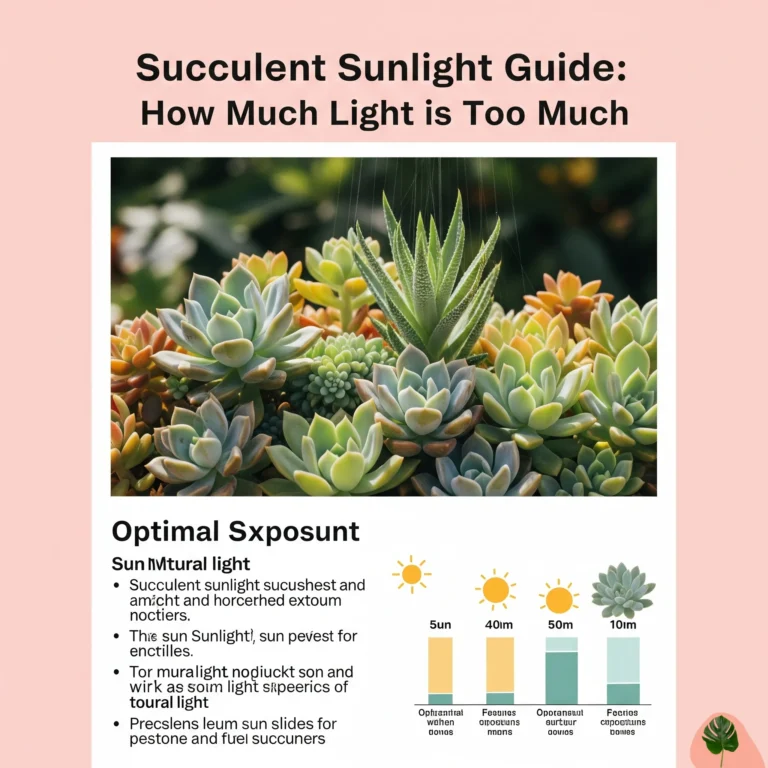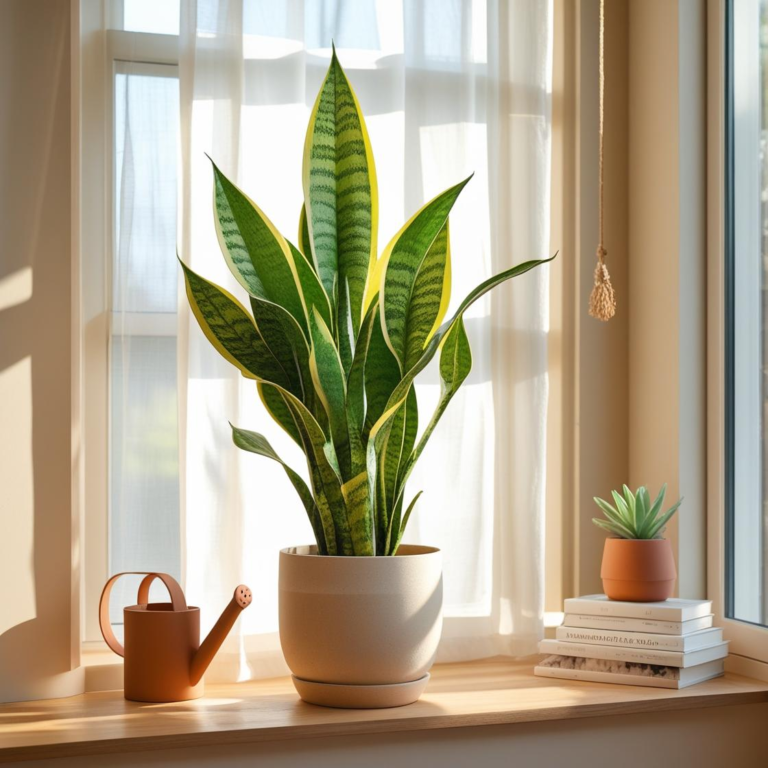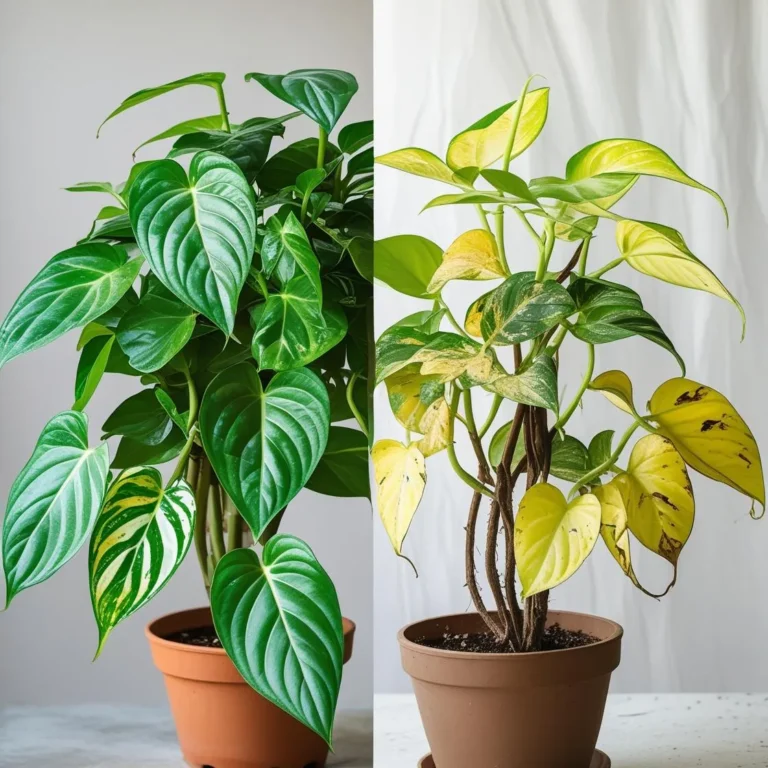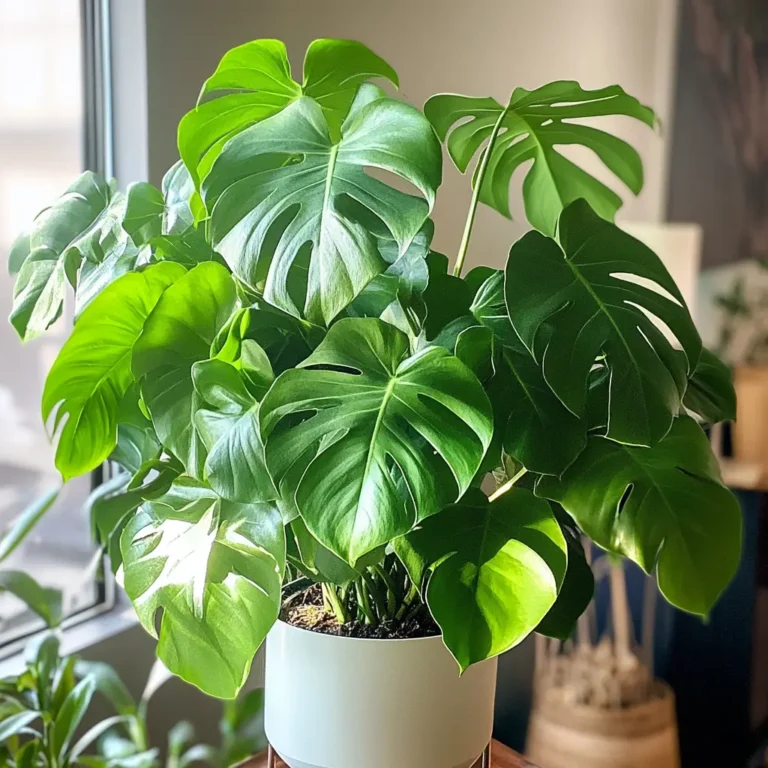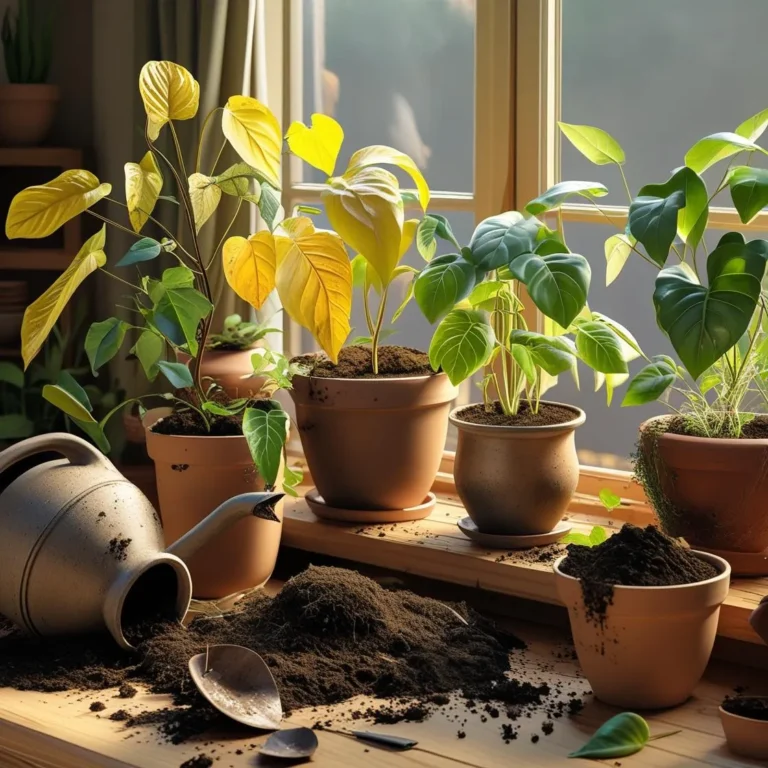Fiddle Leaf Fig Care – Mastering This Stylish Indoor Tree
The Fiddle Leaf Fig (Ficus lyrata) stands as the ultimate statement piece among indoor trees, captivating plant enthusiasts with its dramatic, violin-shaped leaves and architectural presence. This stunning large leaf plant has become the Instagram darling of interior design, transforming modern living spaces with its bold, sculptural silhouette. While this bright light plant requires more attention than typical houseplants, mastering fiddle leaf care rewards you with a breathtaking air-purifying plant that commands attention in any room.
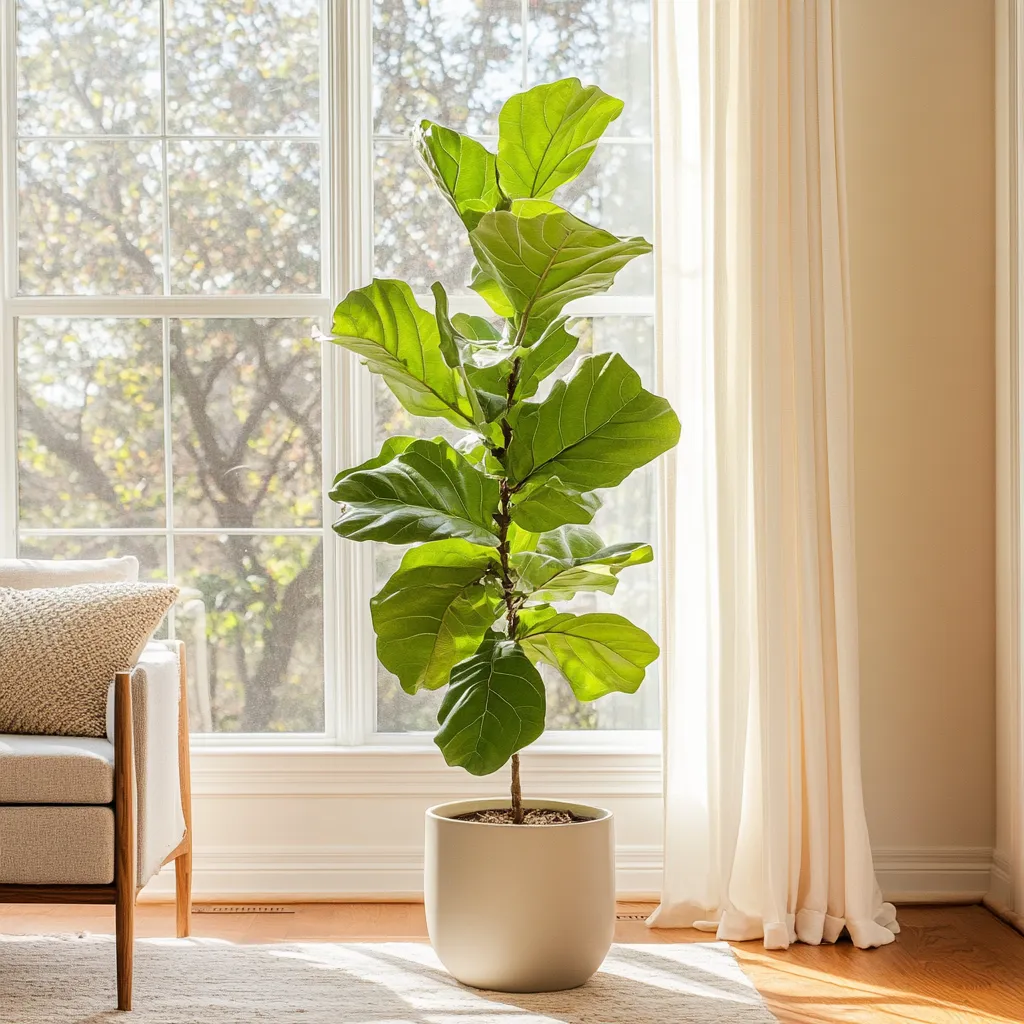
Quick Overview Table
| Attribute | Detail |
|---|---|
| Common Name | Fiddle Leaf Fig |
| Botanical Name | Ficus lyrata |
| Light | Bright, indirect light |
| Water | Let top 2 inches of soil dry |
| Temperature | 65–75°F (18–24°C) |
| Toxicity | Toxic to pets and humans if ingested |
| Growth Habit | Upright tree-like, can reach 6+ feet |
| Difficulty | ★★★☆☆ (Moderate) |
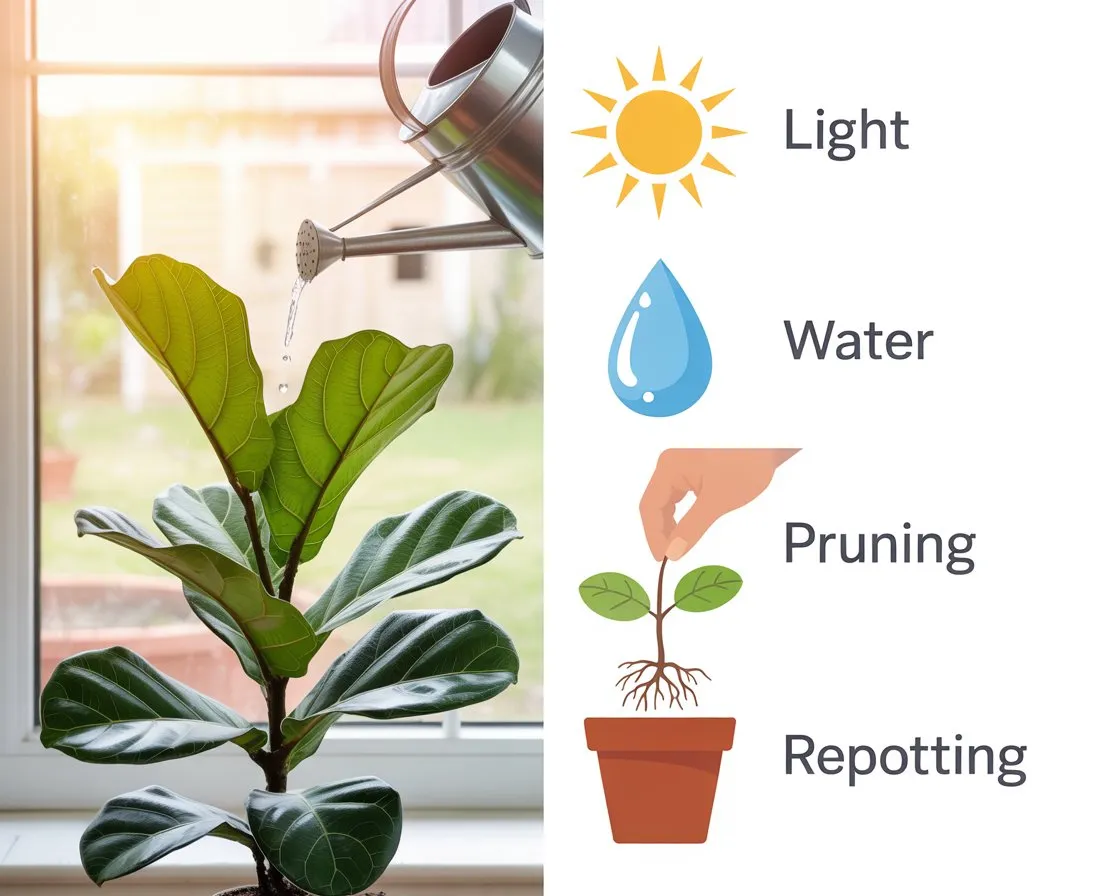
Plant Description
Native to West Africa’s tropical rainforests, this magnificent indoor tree showcases large, leathery leaves distinctively shaped like fiddles or violins. The Ficus lyrata grows naturally with a central stem reaching impressive heights, though it can be pruned into a fuller, bushy shape. Each glossy leaf can grow up to 18 inches long, creating dramatic visual impact that makes this houseplant maintenance effort worthwhile.
Fiddle Leaf Fig Lighting Needs – Exposure Chart
| Light Type | Suitability | Impact on Growth |
|---|---|---|
| Bright Indirect | ✅✅✅ | Optimal growth, deep green leaves |
| Medium Light | ✅✅ | Slower growth |
| Low Light | ❌ | Causes leaf drop, weak stems |
| Direct Sunlight | ⚠️ | Can burn leaves without acclimation |
Your Fiddle Leaf Fig craves consistent, bright indirect light – ideally 6+ hours daily near an east or west-facing window.
Watering Instructions – Checklist
✅ Water when top 2 inches of soil are dry
✅ Use lukewarm, filtered water
❌ Don’t let it sit in water
❌ Avoid inconsistent watering cycles
💧 Pro Tip: Use a moisture meter for accuracy. Consistent watering prevents the dreaded leaf drop that plagues many Fiddle Leaf Fig owners.
Temperature & Humidity
This tropical indoor tree prefers stable temperatures between 65–75°F (18–24°C) and abhors cold drafts or sudden temperature swings. Your Ficus lyrata loves humidity levels of 40-60% – consider misting leaves weekly or using a humidifier during dry seasons to prevent brown leaf edges.
Soil & Fertilizer – Schema
Recommended Soil Mix:
- 2 parts high-quality potting soil
- 1 part perlite for drainage
- 1 part peat moss or coco coir for moisture retention
Fertilize: Monthly during spring and summer with balanced 3-1-2 liquid fertilizer diluted to half strength. This fiddle leaf care routine supports healthy growth without burning sensitive roots.
Fiddle Leaf Fig Pruning & Cleaning – Step-by-Step Table
| Step | Action | Purpose |
|---|---|---|
| 1 | Wipe leaves with damp cloth | Remove dust for better photosynthesis |
| 2 | Prune top leaves | Encourage bushier growth |
| 3 | Remove dead leaves | Prevent disease |
| 4 | Rotate pot weekly | Ensure even growth |
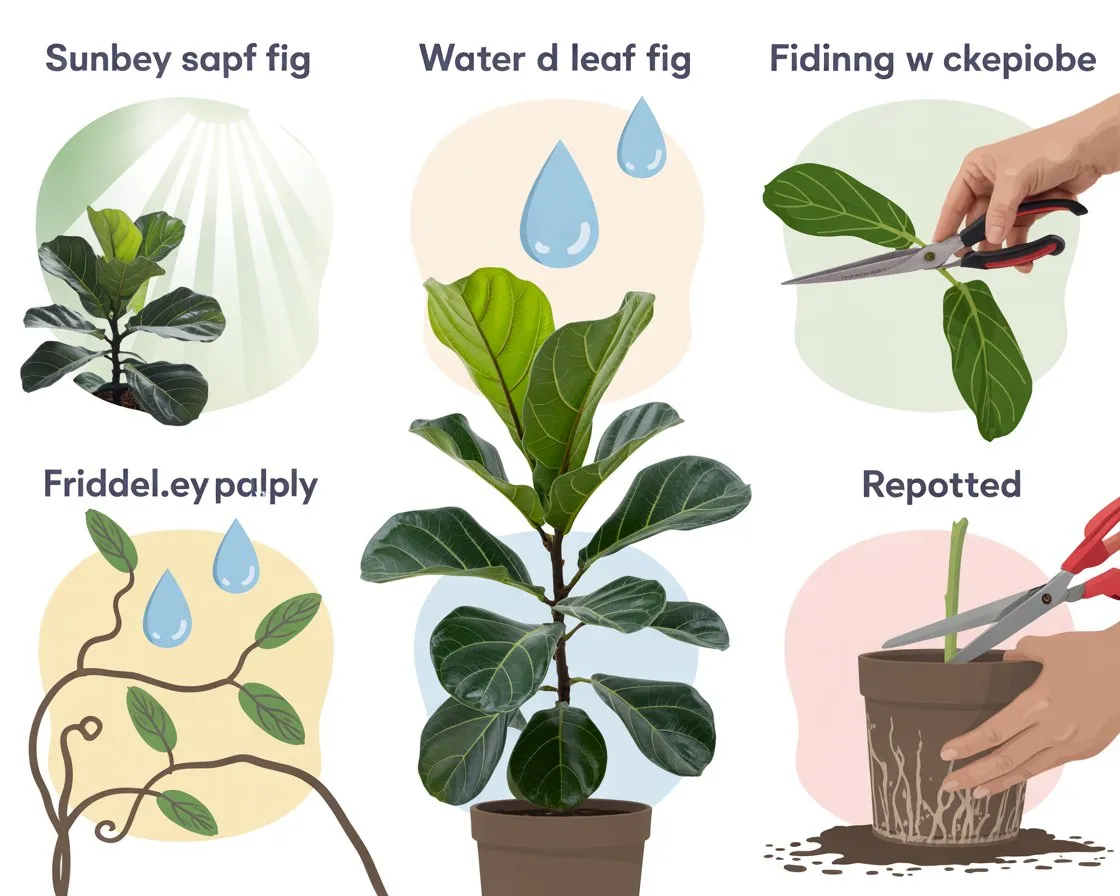
Regular houseplant maintenance keeps your large leaf plant looking pristine and healthy.
Repotting Guidelines
Repot your Fiddle Leaf Fig every 1–2 years or when roots grow through drainage holes. Choose a pot 2 inches larger in diameter and perform repotting in spring to minimize stress. This timing allows your indoor tree to establish roots during the active growing season.
Common Problems – Troubleshooting Table
| Symptom | Cause | Solution |
|---|---|---|
| Brown Leaf Edges | Low humidity or overwatering | Increase humidity, check watering |
| Leaf Drop | Inconsistent watering/light | Establish consistent care routine |
| Yellow Leaves | Overwatering or poor drainage | Let soil dry, improve drainage |
| Leggy Growth | Insufficient light | Move to brighter location |
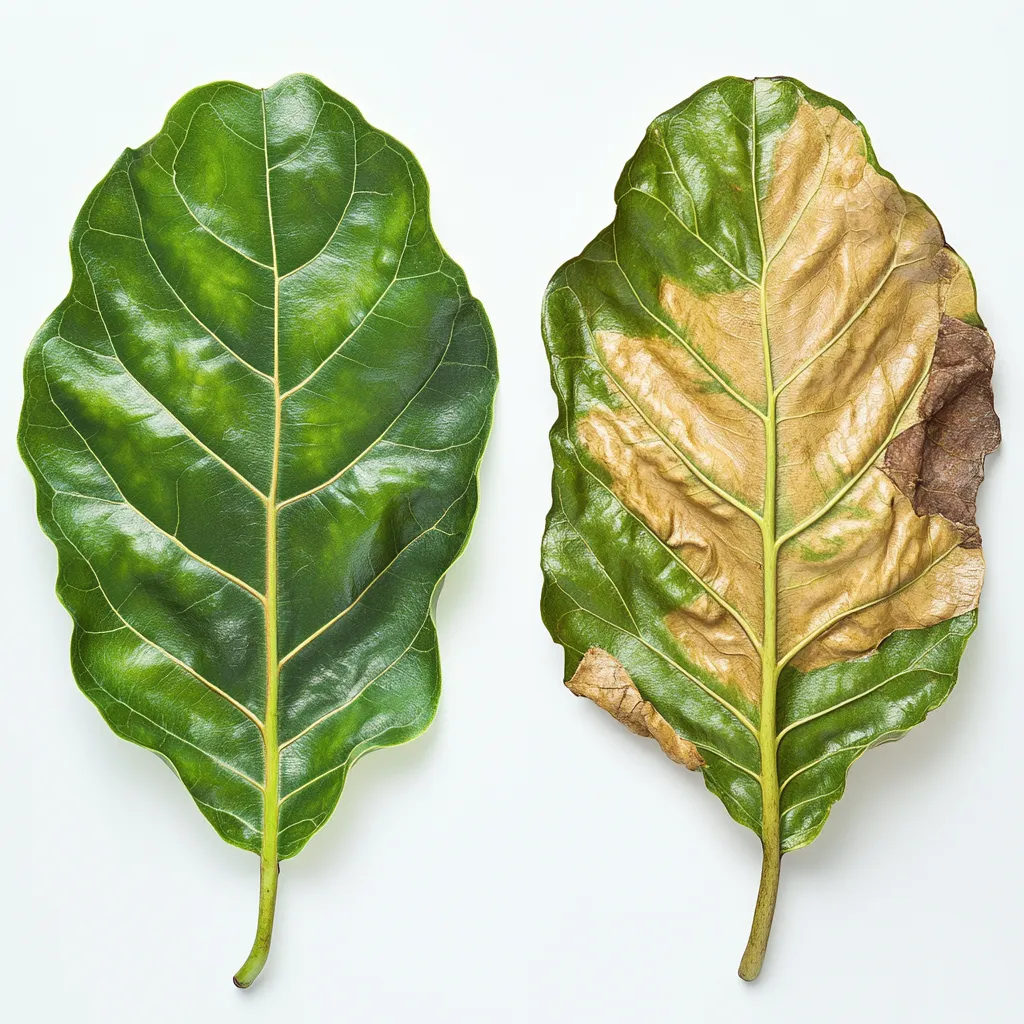
Benefits of Fiddle Leaf Fig – Why Choose This Indoor Tree
- 🌿 Dramatic visual impact – Creates stunning focal points in any room
- 🏠 Air-purifying qualities – Removes toxins from indoor air
- 📸 Instagram-worthy aesthetics – Perfect for modern interior design
- 🌱 Long-term investment – Can live for decades with proper care
Frequently Asked Questions
Q: Is my Fiddle Leaf Fig safe around pets?
A: No. Ficus lyrata is toxic if ingested by pets or humans. Keep it away from curious animals and children.
Q: Why are my fiddle leaf’s leaves dropping?
A: Usually caused by inconsistent watering, insufficient light, or environmental stress. Maintain steady care routines.
Q: How fast does a Fiddle Leaf Fig grow?
A: With proper bright light plant care, expect 1-2 feet of growth annually during growing season.
Conclusion
The Fiddle Leaf Fig rewards dedicated plant parents with unmatched elegance and dramatic presence. While this stylish indoor tree requires more attention than typical houseplants, mastering its care routine creates a stunning living sculpture that transforms any space. With consistent bright light, proper watering, and regular houseplant maintenance, your Ficus lyrata will thrive as the centerpiece of your plant collection.
Ready to add this show-stopping air-purifying plant to your home? Your fiddle leaf care journey begins now!


